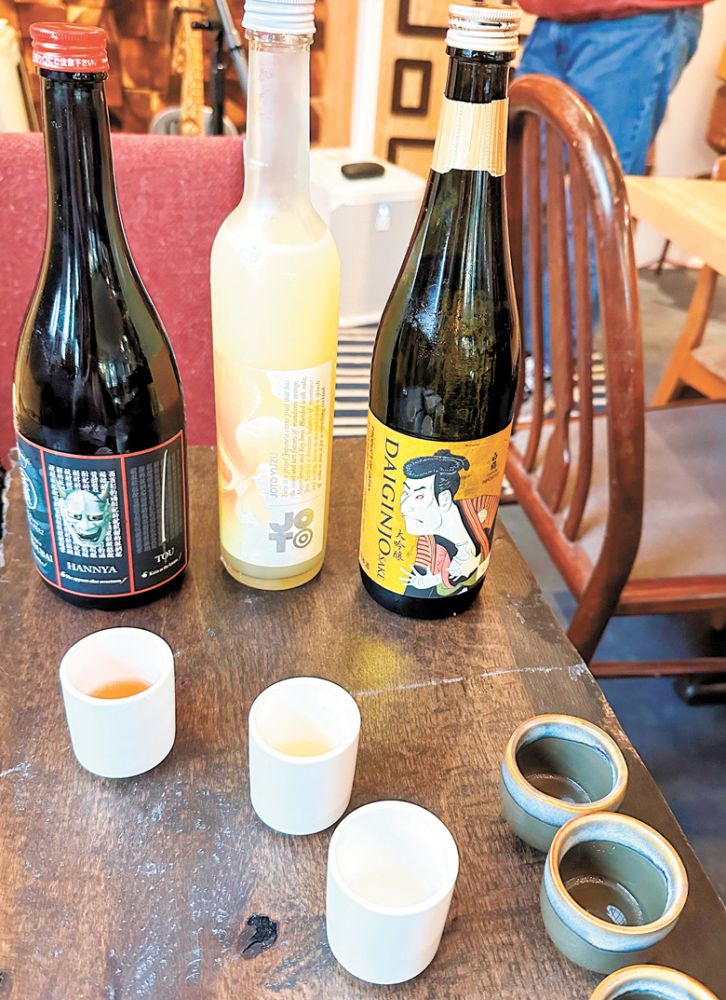Phoenix Rising
Southern Oregon tragedy presents an opportunity to innovate

By Paula Brandy
In early September 2020, the Almeda Fire swept rapidly through the small Rogue Valley towns of Talent and Phoenix. Over 2500 homes and 600 businesses were destroyed in a matter of hours. Popular food truck Daddy Ramen, owned by Phoenix Sigalove and Lichen Richardson, was among countless causalities. They had evacuated, leaving the food truck parked next to their home, and later learned that “fire had rained down on the cul-de-sac. All the houses burst into flames at the same time. What remained was about five inches of ash,” whispers Sigalove.
“This is a really interesting time right now,” he continues. “Not only is Talent rebuilding, but there are new possibilities allowing us to define what we want to be. We saw this opportunity in less than 800 square feet to present a number of different businesses, all kind of blended together. From morning coffee and live music, to dinner with Daddy Ramen food truck. And a new supper club on Friday and Saturday nights, again with local live music, including beer, wine and a saké bar.”
Saké needs only four ingredients– rice, koji, yeast and water– with water a major factor. Clear mountain water is different from coastal waters. The minerality in water is different, as are the various strains of saké-specific rice developed over the centuries. Like wine, the flavor profiles are different, but unlike wine, saké tends toward more consistent flavors, rather than vintage differences. Sigalove, a certified Saké Sommelier Level 1, explains, “It’s said there are 200 descriptor words to describe the flavor profiles in wine. With saké, there are over 400.”
“Tasting notes can be a great learning tool, but I encourage people to discover the flavors on their own, too,” Sigalove continues. “The more you taste, the more you pair. It’s such a fascinating thing when your tongue tells your brain something different because of what you’re tasting it with–sweet, salty, cheese, seafood, chocolate– they all alter the flavor of saké. Most Americans who drink saké tend to stick with the same few. I love giving people an opportunity to discover just how vast, and how wild, the perimeters of saké can be,” says Sigalove.
Saké exploration
Flight one (all served chilled)
First on our flight was Manga, a Junmai Ginjo, dressed in a black and white manga wrap. Individual grains of rice are ‘polished’ to varying degrees, to 60 percent. The 40 percent milled away from the hull is mostly proteins, leaving carbohydrates that create a classic Junmai Ginjo-style saké. Sigalove feels Manga is a “Fun intro to a younger audience, a cool bottle to have on the shelf. It’s hip,” he says. “Saké stayed traditional for centuries until very recently and now there’s a new, innovative generation of Japanese and non-Japanese brewmasters, known as tojis, exploring new possibilities. They’ve done one of the things Japanese people do best, giving great thought to presentation with inventive packaging. Manga is a fun, drinkable saké.”
My second taste was Watari Bune 55, with the outer hull milled slightly finer at 45 percent. Even leaving 55 percent of the inner rice grain, this remains a Junmai Ginjo. Sigalove says, “When I first tasted Watari Bune, it absolutely blew my mind. It was the most beautiful beverage I’d ever tried. This made me fall in love with saké.”
I must admit it tasted extraordinary, leaving me speechless. I’ve never sampled anything like it. It left a feeling, almost more than a taste. Perhaps like strolling through a flower-filled bamboo forest. Maybe it’s about picking pineapple after a rain. This was a saké rice assumed to be extinct for 60 years and now revived. As Sigalove describes it, “this was just a total revelation.”
Next was Yuki Tora, translated as Snow Tiger, a beautifully creamy Nigori-style saké. Sigalove explains, “People incorrectly call this unfiltered. All saké is filtered and then some of the rice sediment is reintroduced back into it, creating a Nigori. It’s very specific and carefully measured, completely emulsified and liquid.”
Delicious, refreshing and beautiful.
Flight two (all served chilled)
Sigalove intends to expand people’s expectations of what saké can be with this flight. Starting with a Daiginjo, this saké takes us beyond 50 percent milled. At this point, it’s been milled to almost 100 percent carbohydrate. What’s left afterward feels almost microscopic. “The rice kernels are tiny dots in your hand,” he says, “and you are holding hundreds in your palm.”
Because of its high refinement, Daiginjo skips to another price point. This one, from one of the largest saké producers, Hakutsuru, is their introductory Daiginjo which Sigalove describes as an easy drinking, lovely saké.
The next tastings are wild surprises. He explains, “One of the trends in the past couple years has been infusion. Until recently, saké was such a sacred and traditional thing, but now it’s fun and exciting– the sky’s the limit.”
Joto Yuzu refers to saké infused with popular Japanese aromatic citrus fruit, yuzu, subtle with soft flavors of Mandarin orange, lime, and lemon. Sigalove calls it the after-dinner wine of saké. A pale yellow, with delicate floral label, sip like limoncello or pour over ice cream as a saké affogato. Best described as ambrosial.
The final tasting was an exotic infusion of plum wine and chili peppers into saké. Hannya, pours out a rich amber color and with the first sip there’s a spark of spice. It doesn’t linger long before sweet plum wine flows in, like a warm bath. Sigalove describes Hannya as “a saké cocktail.” While he hasn’t yet tried it warmed, he thinks it could be quite interesting that way too.
The Vintage Coffee House & Saké Bar is continually expanding their menu and always trying new things. As Phoenix Sigalove is proving, rising from ashes presents unlimited possibilities.









